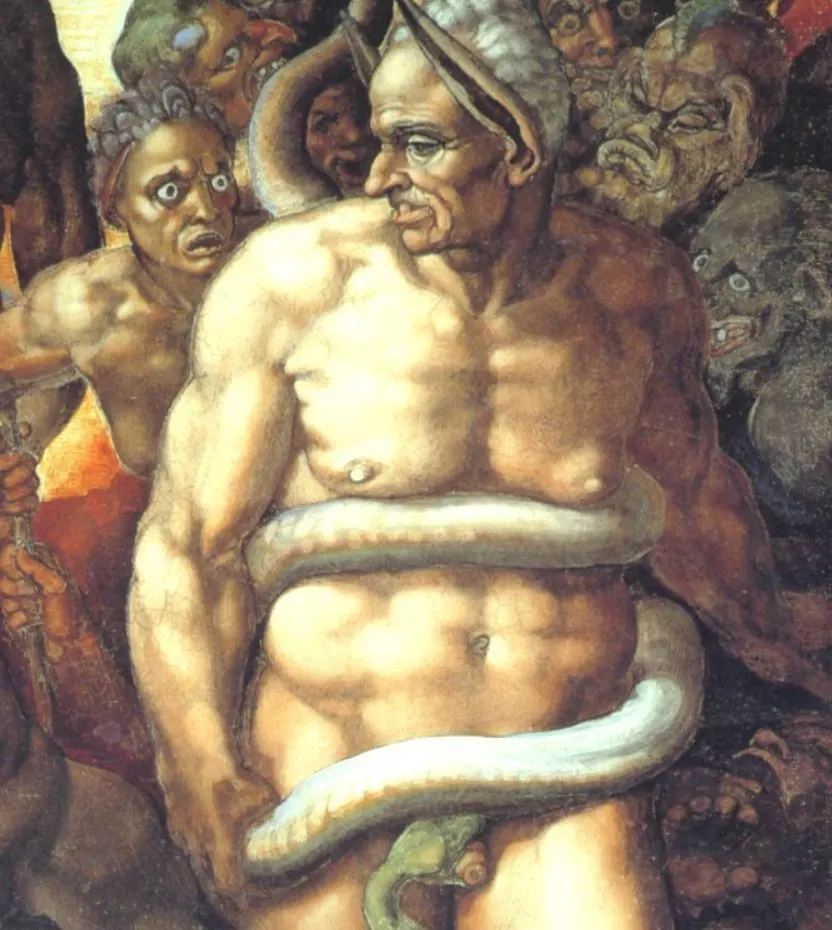Very few buildings will have you stand in awe as much as the interior of this amazing structure in Rome.
This chapel is world-famous for its magnificent frescoes that are so impressive that they can instantly leave you with a bad case of Stendhal Syndrome.
In this post, we’ll take a closer look at the top 10 facts about the Sistine Chapel, an incredible building that you simply must put on your bucket list when visiting the capital of Italy!
1. It’s a chapel in the official residence of the Pope
The Sistine Chapel is part of the Vatican Museums in Vatican City, the small papal enclave situated within the city of Rome. It’s one of the chapels of the Apostolic Palace, the official residence of the Pope.
This palace was built in the late 16th century and features Papal apartments, various chapels, and offices of the Catholic Church. It also features two of Rome’s major tourist attractions, the Raphael Rooms and the Sistine Chapel, both world-famous for the magnificent frescoes on their walls.
Two of the most famous landmarks in Rome are located just nearby as well, the monumental St. Peter’s Square and the largest church in the world, the magnificent St. Peter’s Basilica.
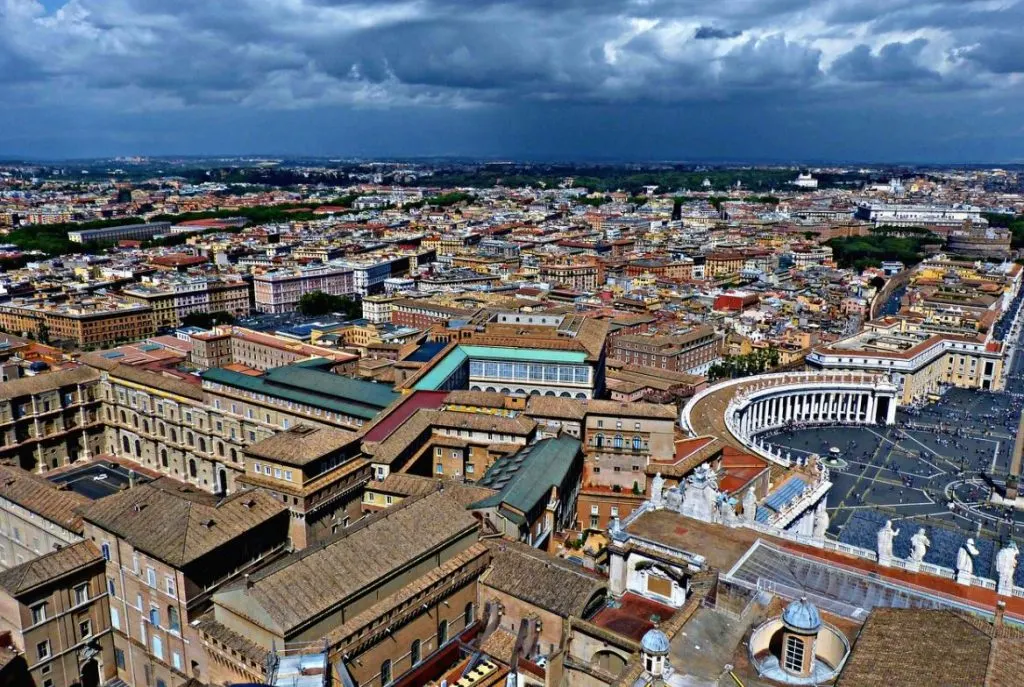
2. It was named after the Pope who rebuilt the structure
The chapel was built in the late 16th century as well and replaced an existing building referred to as the Cappella Maggiore (The greater Chapel). This large chapel was built before the year 1368 and had about the same layout as the chapel today.
It was, however, completely dilapidated during the reign of Pope Sixtus IV so he decided to rebuild the structure, something that happened between 1473 and 1481.
The Chapel was used shortly after and consecrated on August 15, 1483, which is the day that the first mass was held here.
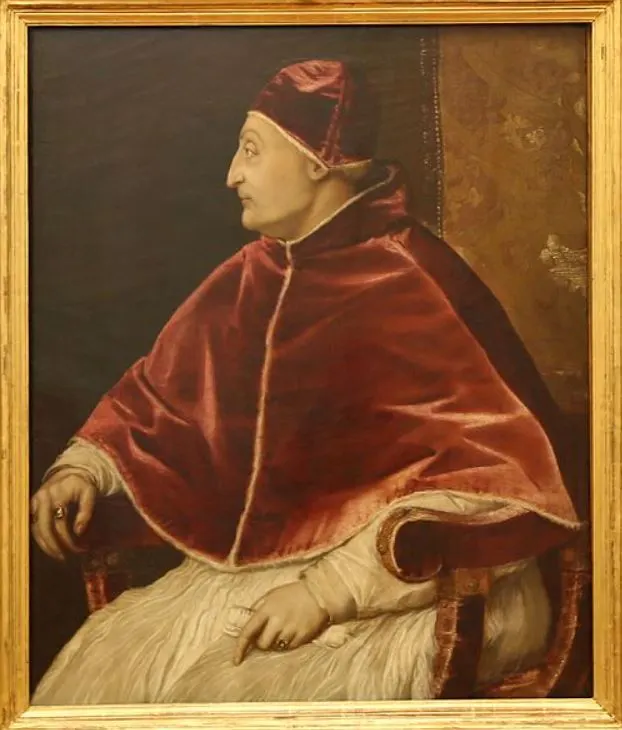
3. The exterior of the chapel is as dull as can be

As magnificent as the frescos inside the Sistine Chapel are, as dull is the exterior of the structure. This wasn’t unusual for religious medieval and Renaissance buildings in Italy.
Another reason that the exterior wasn’t decorated is that it can only be seen from windows in buildings of the Apostolic Palace nearby. That’s quite a different setting than a chapel or church located in a public square.
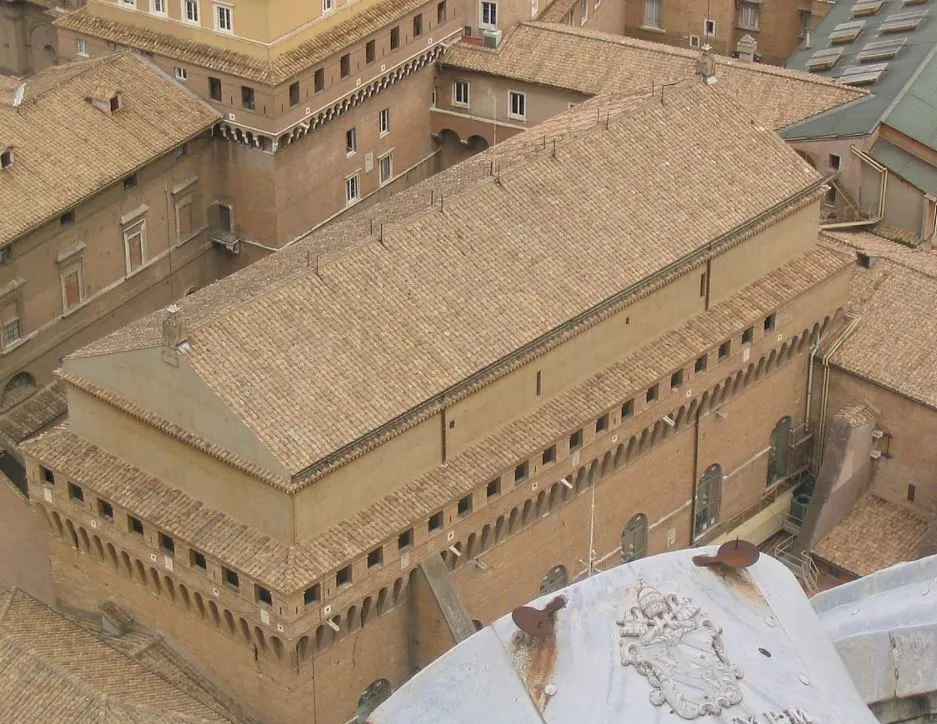
4. Michelangelo’s frescoes weren’t the first to decorate their walls
The chapel is most famous for the frescoes on its walls, and especially the one at the ceiling which features one of the most iconic paintings in art history, “The Creation of Adam” by Michelangelo.
The first frescoes were added much earlier though as the walls were decorated in 1482 by some of the most famous Renaissance artists in history. These artists included Sandro Botticelli, Pietro Perugino, Pinturicchio, Domenico Ghirlandaio, and Cosimo Rosselli.
These themes of these early paintings, which decorate the southern, northern, and eastern walls, are “The Life of Moses” and “The Life of Jesus Chris.”
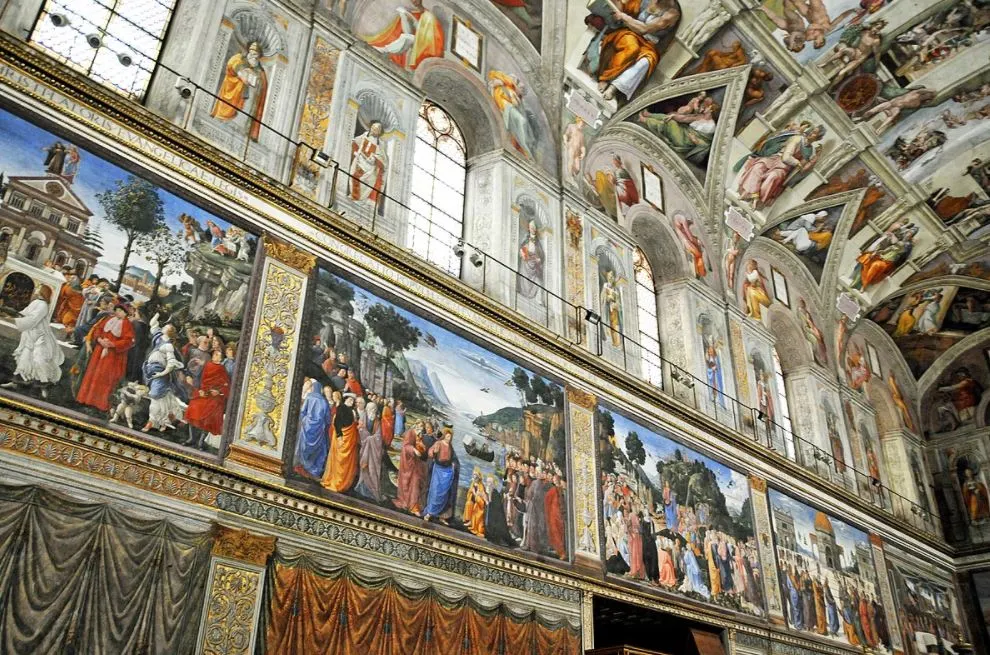
5. It has been used as the venue for choosing a new Pope since 1492
Whenever it’s time to choose a new Pope, a chimney is installed on top of the Sistine Chapel. A conclave of the College of Cardinals comes together in a private meeting inside the chapel to decide who will be the new Pope.
At the end of the meeting, there are two options.
- White smoke from the chimney means a new Pope has been chosen.
- Black smoke means that they didn’t manage to come to an agreement.
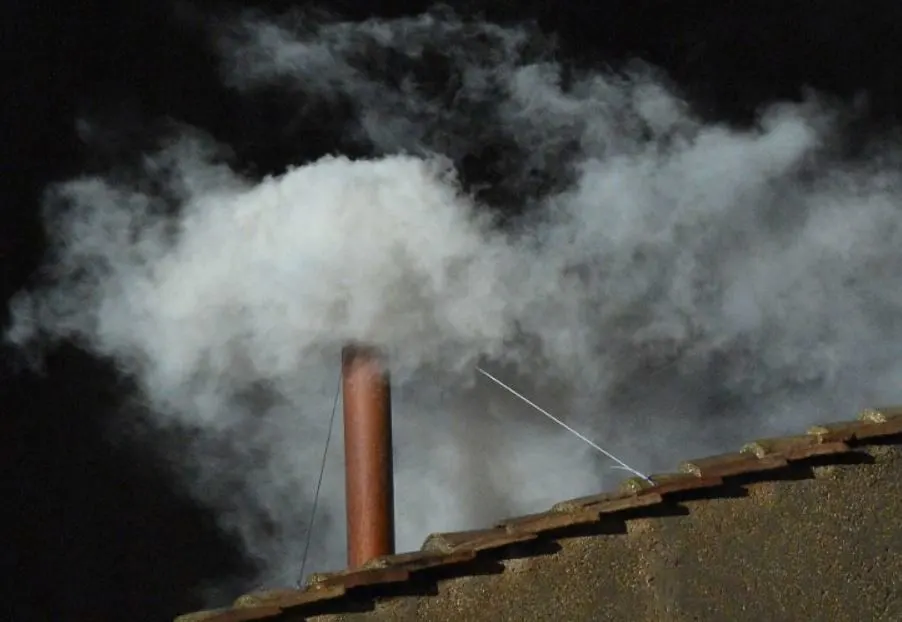
6. The tapestries Raphael created for the chapel aren’t with us anymore
Shortly after Michelangelo finished the magnificent fresco on top of the chapel’s ceiling, Raphael also earned a commission. He created 10 tapestries to decorate the lower tier of the chapel’s walls in 1515 and they were manufactured in Brussels, a process that took 4 years.
Unfortunately, the mutinous troops of Charles V, Holy Roman Emperor, sacked Rome in 1527 and looted and destroyed these tapestries.
7 of the cartoons of these tapestries, known as the “Raphael Cartoons,” are part of the British Royal Collection since 1865 and are on public display at the Victoria and Albert Museum in London
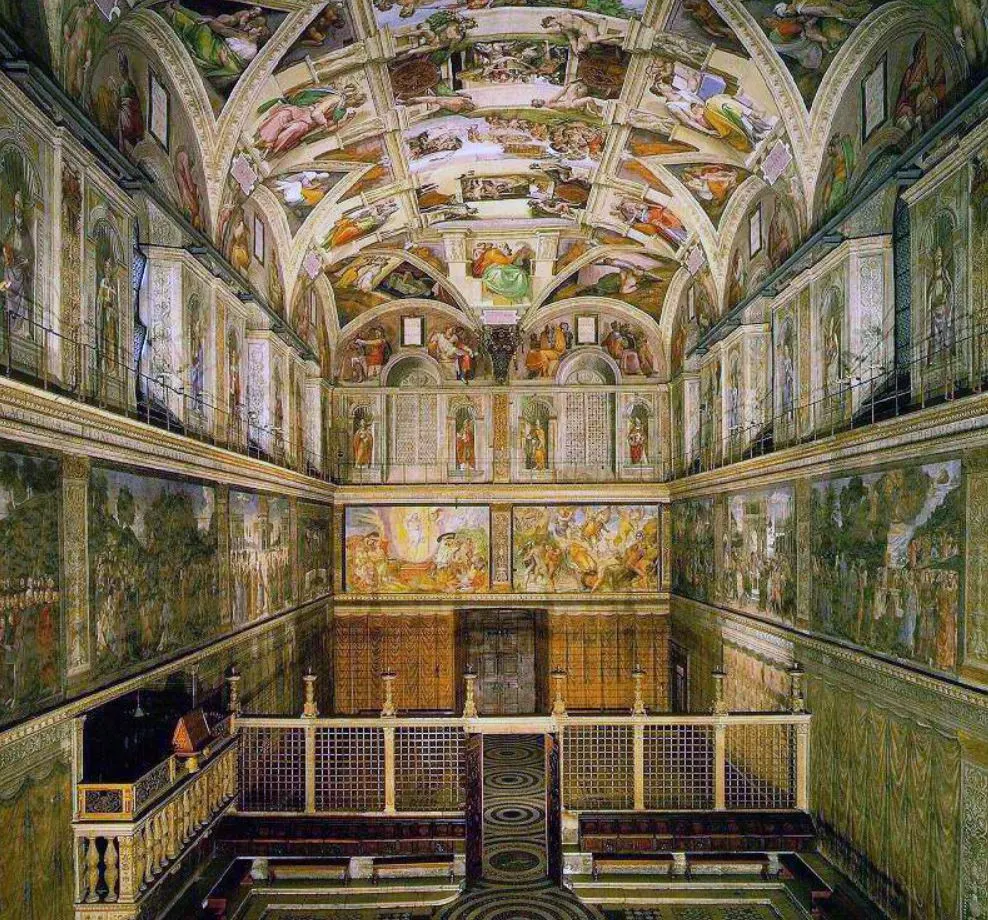
7. Michelangelo’s scaffold was originally supposed to fly in the air
So how did Michelangelo manage to paint the ceiling of the chapel? After all, the chapel has a length of 40 meters (131 feet) and a width of 13 meters (43 feet), which means he painted a total of 460 square meters (5,000 square feet) between 1508 and 1512.
The answer is that he used a scaffold to reach the ceiling, but not the original ones proposed by Donato Bramante, the original architect of St. Peter’s Basilica.
His idea was to attach the scaffolding to the ceiling with ropes so it was basically supposed to fly in the air, and Michelangelo as well. Needless to say that he refused to use this and even had a chuckle upon hearing the idea!
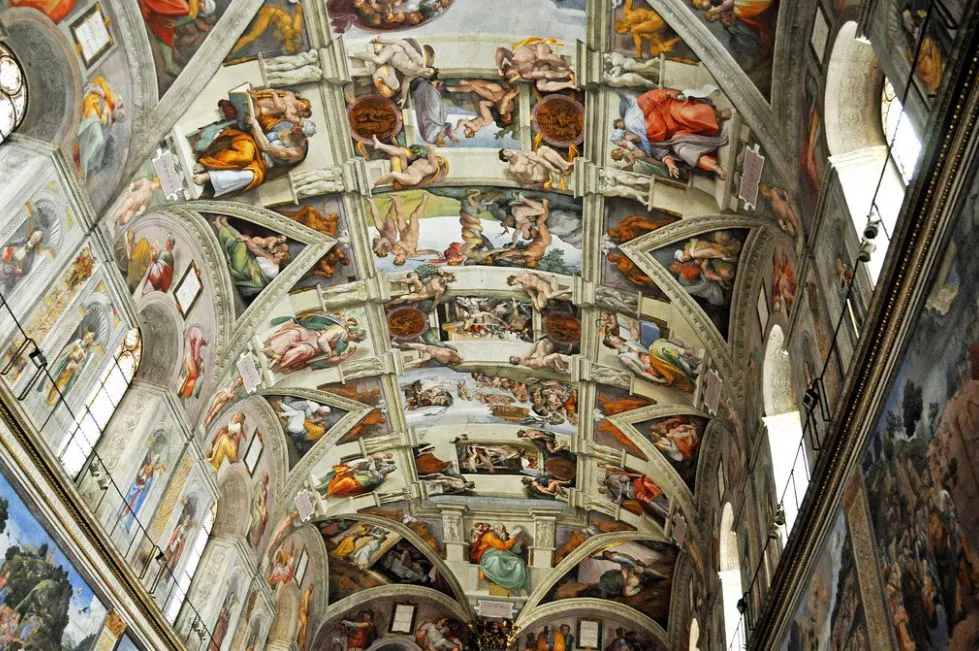
8. The artist didn’t lie down on the scaffold while painting the ceiling
There was only one thing going to happen and that was that Michelangelo ended up building the scaffold himself. He designed a flat wooden platform that was attached to the wall of the chapel, a much simpler idea that worked just fine.
Many sources claim that he even lied down on the scaffold to paint the ceiling, something depicted in the 1965 film “The Agony and the Ecstasy,” in which Charlton Heston depicts Michelangelo and his struggles while painting the ceiling.
He painted while standing, even though he often complained about back pains during the 4 years he worked on this masterpiece.
Have you ever tried to paint a ceiling? Then you most probably feel his pain right now!
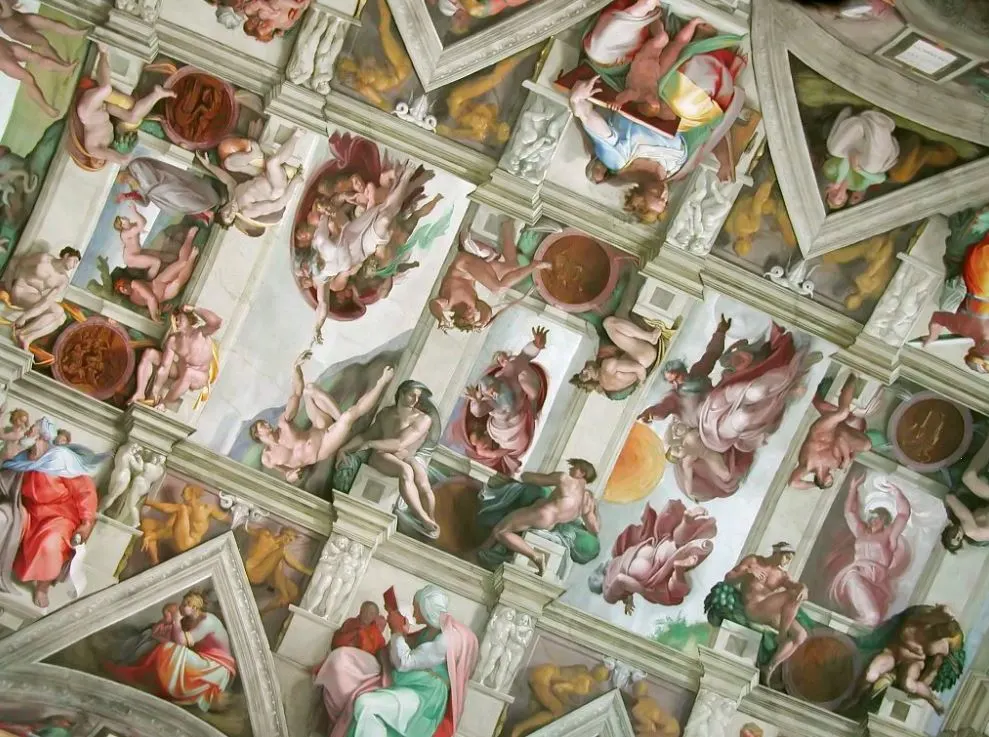
9. The Last Judgement was completed nearly 30 years after the ceiling
The other incredible painting created by Michelangelo in the Sistine Chapel is called “The Last Judgement” and occupies the entire altar wall of the chapel.
One of the most remarkable facts about the Sistine Chapel is that this fresco was painted between 1535 and 1541, nearly 3 decades after the ceiling was completed.
The painting included a lot of nudity which was objected to by many members of the Catholic Church. This resulted in the genitals of the figures being overpainted by Mannerist painter Daniele de Volterra, a work he started in 1565.
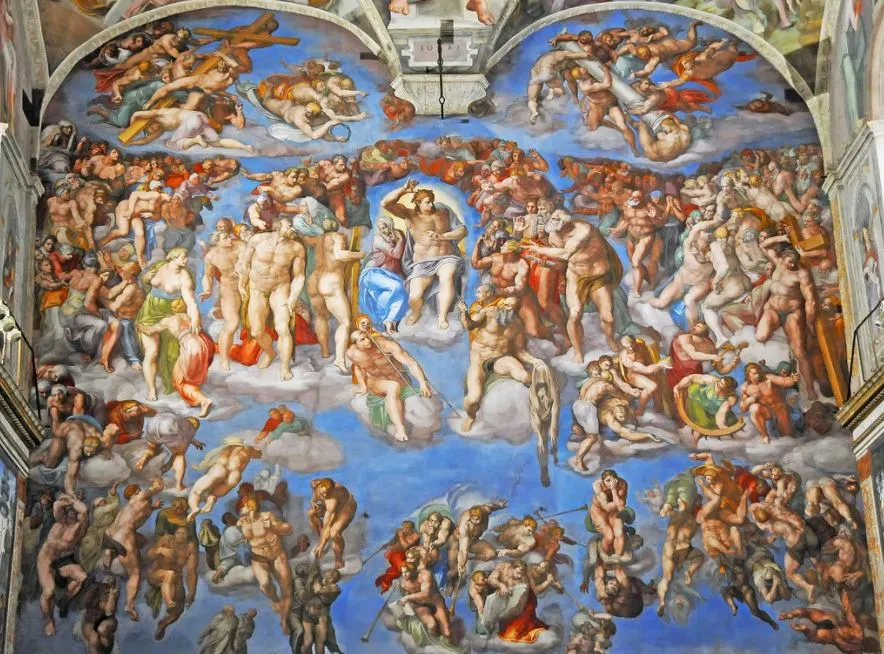
10. This Is How Michelangelo got his revenge after his work was criticized
One of the most outspoken critics of Michelangelo’s work was the Pope’s Master of Ceremonies Biagio da Cesena (1463-1544). He once noted that “It was mostly disgraceful that in so sacred a place there should have been depicted all those nude figures, exposing themselves so shamefully, and that it was no work for a papal chapel but rather for the public baths and taverns.”
This didn’t go over too well with Michelangelo who didn’t like being criticized. He ultimately got his revenge when he depicted his critic as Minos, the judge of the underworld, near the gates of hell in a less than flattering manner.
He surely mustn’t have liked the big ears and snake, that’s for sure!
